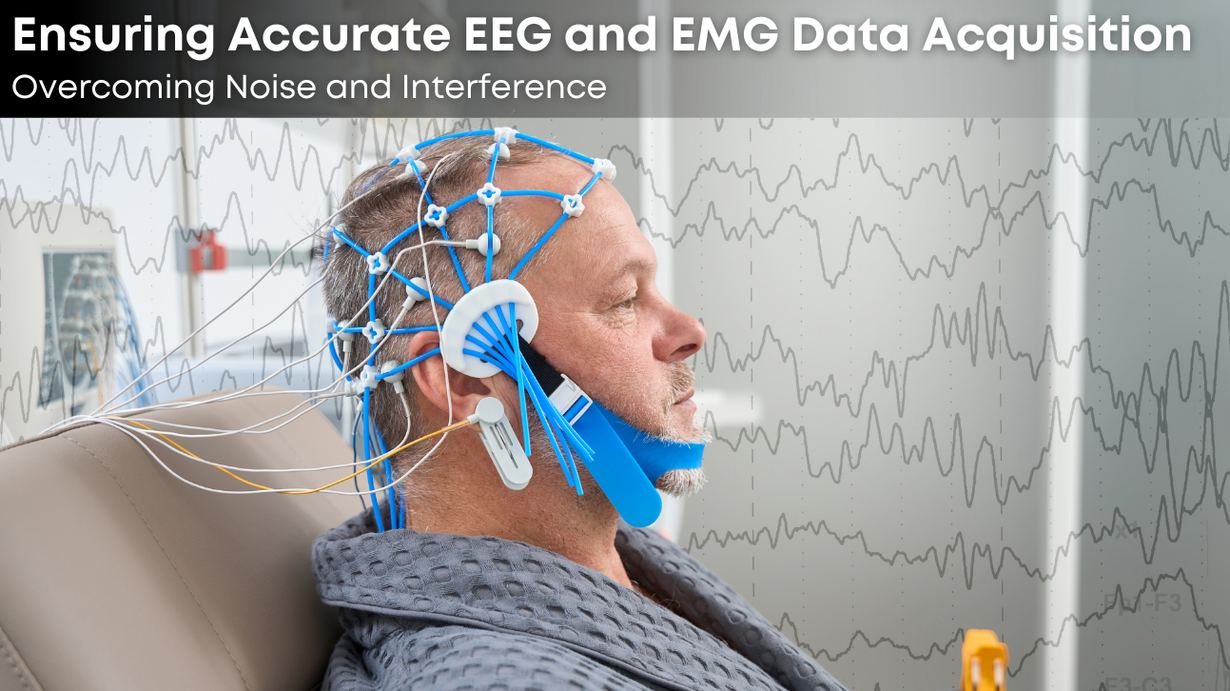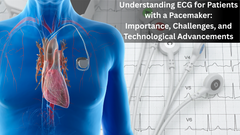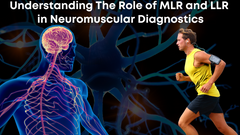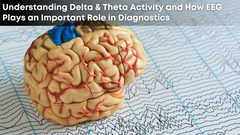Ensuring Accurate EEG and EMG Data Acquisition: Overcoming Noise and Interference
Electroencephalography (EEG) and electromyography (EMG) are indispensable tools in neurological and muscular diagnostics. They provide critical insights into the brain’s electrical activity and muscle function, helping doctors diagnose a wide range of conditions, from epilepsy to neuromuscular disorders. However, one of the most persistent challenges in EEG and EMG data acquisition is the impact of noise—unwanted signals that can interfere with the accurate measurement of the patient’s physiological data.
The Impact of Noise in EEG and EMG Data Acquisition
When performing EEG or EMG tests, the goal is to measure specific electrical signals—whether it’s the brain’s neural oscillations or the muscle’s electrical potentials. However, a variety of external and internal factors can introduce noise, corrupting the data and leading to either misinterpretation or incorrect diagnoses. Understanding these noise sources is critical to reducing their impact and improving the reliability of these tests.
Noise in this context refers to any electrical activity recorded by the electrodes that do not originate from the intended physiological source (brain or muscles). Noise can mask or distort the true signal, making it difficult to extract meaningful information. In severe cases, it can make the results unusable altogether.
Types of Noise in EEG and EMG Data
Several types of noise can interfere with EEG and EMG recordings. Each has different origins and requires tailored solutions for mitigation. Here are the primary types of noise that clinicians and technologists must be aware of:
> Power Line Interference (50/60 Hz Noise)
One of the most common sources of noise is power line interference, which occurs due to the presence of nearby electrical devices or wiring systems. This noise typically presents as a consistent oscillation at 50 Hz (in regions with 50 Hz electrical systems) or 60 Hz (in regions with 60 Hz systems) and can be superimposed onto the EEG or EMG signal, making it difficult to distinguish the actual physiological data.
> Electrode-Skin Impedance Noise
Poor contact between the electrode and the patient’s skin can result in impedance noise. This often occurs due to inadequate preparation of the skin or poor-quality electrodes, and it manifests as irregular, low-frequency fluctuations in the recorded signal. High impedance can also lead to increased susceptibility to other types of noise.
> Muscle Artifact Noise (EMG Contamination in EEG)
During EEG recordings, muscle movements—such as eye blinks, jaw clenches, or even slight facial twitches—can generate electrical signals that are picked up by the EEG electrodes. These signals, known as muscle artifacts, can distort the brain activity measurements and make it difficult to separate the muscle-generated signals from the neural data.
> Motion Artifacts
Movement of the patient, including head or limb movements, can lead to motion artifacts, which are low-frequency signals introduced by shifting electrodes or cables. These artifacts are particularly problematic during long-duration EEG or EMG tests where patients are required to remain still for extended periods.
> Electromagnetic Interference (EMI)
External devices such as medical equipment, computers, or even mobile phones can produce electromagnetic interference (EMI), which contaminates the EEG or EMG signal. EMI can range from mild to severe, depending on the proximity of the interfering devices and the shielding of the EEG/EMG equipment.
> Biological Noise
Biological noise, such as heartbeats (ECG signals) or breathing patterns, can also introduce unwanted signals into EEG and EMG recordings. For instance, cardiac signals may be detected in nearby electrodes during EEG recordings, leading to artifacts in the data.
> Environmental Noise
Environmental factors, such as room temperature fluctuations, static electricity, or even vibrations from surrounding machinery, can contribute to noise in EEG and EMG recordings. While often less noticeable than electrical noise, environmental factors can still affect the accuracy of the data if not properly controlled.
How Clarity Medical Tackles Noise in EEG and EMG Recordings
Clarity Medical has long recognized the importance of noise-free data acquisition in EEG and EMG systems. With decades of experience in medical device development, Clarity Medical has integrated advanced noise filtration technologies into its systems to minimize the impact of unwanted signals and ensure that the data captured is both accurate and reliable.
Here’s how Clarity Medical approaches noise mitigation:
> Digital Filtering Technology
Clarity Medical’s systems incorporate advanced digital filters designed to selectively remove noise without compromising the integrity of the underlying physiological signal. These filters include high-pass, low-pass, and notch filters, which can be used to eliminate specific types of noise, such as low-frequency motion artifacts or 50/60 Hz power line interference.
> Adaptive Noise Cancellation (ANC)
For more complex noise, Clarity Medical employs adaptive noise cancellation (ANC) techniques. ANC continuously monitors noise in real-time and adjusts the filtering parameters accordingly, ensuring that dynamic changes in the environment or patient movement don’t interfere with data acquisition.
> High-Quality Electrodes and Conductive Materials
A common source of noise in EEG and EMG tests is poor electrode contact. Clarity Medical uses high-quality electrodes made from materials with excellent conductivity, which help to reduce impedance and improve the overall signal quality. In addition, the systems are designed with superior skin preparation tools, ensuring that electrodes maintain consistent contact with the skin.
> Shielded Cables and Equipment
Clarity Medical's devices are built with shielded cables to protect against electromagnetic interference from external devices. The design of these systems ensures that even in environments with a high level of electrical activity, the impact of EMI is minimized.
> Motion Artifact Reduction Algorithms
Clarity Medical has developed motion artifact reduction algorithms that can detect and correct for patient movement during recordings. These algorithms identify irregular patterns that are likely due to motion and apply corrective measures to remove or minimize their impact.
Conclusion
In the realm of EEG and EMG testing, accurate data acquisition is paramount. Noise and external factors can significantly compromise the quality of the data, leading to incorrect diagnoses or misinterpretation of critical signals. However, with the use of Clarity Medical’s advanced noise filtration technologies, clinicians can be confident that the data collected is precise, clean, and reliable.
By investing in high-quality materials, adaptive filtering techniques, and robust real-time monitoring, Clarity Medical continues to set the standard for EEG and EMG systems, providing healthcare professionals with the tools they need to make informed decisions and deliver the best possible care to their patients.












